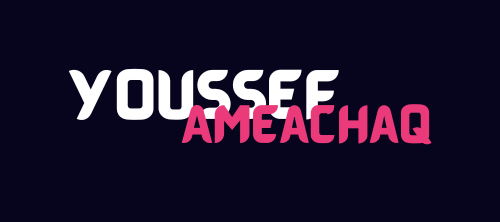
Understanding Channels in Go
Channels in Go (or Golang) are one of the core concepts that allow goroutines to communicate with each other. If you’re just getting started with concurrency in Go, this article will help you understand how channels work, common mistakes, and best practices.
What is a Channel in Go?
A channel is a way to send and receive values between goroutines safely. You can think of it as a pipe where one goroutine sends data and another receives it.
Here’s how you declare and create a channel:
// Declaration
var ch chan int // A channel for sending/receiving integers
// Initialization
ch = make(chan int) // Create the channel
// Or use shorthand:
ch := make(chan int)Important: Difference Between var ch chan int and ch := make(chan int)
var ch chan int: Declares a channel but doesn’t allocate memory for it. You must initialize it usingmakebefore use.ch := make(chan int): Declares and initializes the channel in one step, ready to use.
Sending and Receiving Data on a Channel
ch := make(chan int)
go func() {
ch <- 42 // Send data into the channel
}()
value := <-ch // Receive data from the channel
fmt.Println(value) // Outputs: 42Common Channel Errors: Deadlock
A common error you might see is:
fatal error: all goroutines are asleep - deadlock!This happens when your code is waiting to send or receive data on a channel, but there’s no corresponding operation to complete the communication.
Example of Deadlock
func main() {
ch := make(chan int)
ch <- 42 // Stuck here! No goroutine is receiving
value := <-ch
fmt.Println(value)
}How to Fix It
Use a goroutine to handle sending or receiving:
func main() {
ch := make(chan int)
go func() {
ch <- 42 // Send data in a separate goroutine
}()
value := <-ch // Receive data
fmt.Println(value) // Outputs: 42
}Closing a Channel
Closing a channel signals that no more data will be sent. Receivers use this signal to stop waiting for data.
Example
func main() {
ch := make(chan int)
go func() {
for i := 1; i <= 3; i++ {
ch <- i
}
close(ch) // Close the channel
}()
for val := range ch {
fmt.Println(val) // Outputs: 1, 2, 3
}
}Why Close a Channel?
- To signal that no more data will be sent.
- Prevents deadlock when using
for val := range ch. - Note: Only the sender should close a channel. Receivers must not close it.
What Happens After Closing?
- Remaining data can still be received.
- Further reads return the zero value of the channel’s type.
- Sending data to a closed channel causes a panic.
Function Returning a Channel
A function can return a channel, allowing goroutines to receive data from it.
Example: Returning a Receive-Only Channel
func addOne(in <-chan int) <-chan int {
out := make(chan int)
go func() {
for val := range in {
out <- val + 1
}
close(out) // Always close the output channel
}()
return out
}
func main() {
input := make(chan int)
go func() {
input <- 10
close(input)
}()
result := addOne(input)
fmt.Println(<-result) // Outputs: 11
}Why Use Receive-Only Channels?
- Prevent Sending by Mistake: Protect the channel from accidental misuse.
- Clarify Code Intent: Make it clear the function only reads from the channel.
- Encapsulation: Restrict access to ensure only specific parts of the code handle sending or receiving.
Example: Sender and Receiver Separation
func createChannel() (chan<- int, <-chan int) {
ch := make(chan int)
return ch, ch
}
func main() {
sender, receiver := createChannel()
go func() {
sender <- 42
close(sender)
}()
for val := range receiver {
fmt.Println(val) // Outputs: 42
}
}Why Use Read-Only Channels?
Read-only channels are useful for ensuring that certain parts of your code can only receive data from a channel, enhancing clarity and preventing bugs.
Key Benefits of Read-Only Channels
- Prevent Accidental Sends: By using a read-only channel, you ensure that the receiving part of your program cannot mistakenly send data.
- Improve Code Safety: Restricting access helps avoid unintended side effects.
- Clearly Define Responsibilities: Make it obvious which parts of the program handle sending and receiving.
Example: Read-Only Channel Usage
func generateNumbers() <-chan int {
out := make(chan int)
go func() {
for i := 1; i <= 5; i++ {
out <- i
}
close(out)
}()
return out // Returning a read-only channel
}
func main() {
numbers := generateNumbers()
for num := range numbers {
fmt.Println(num) // Outputs: 1, 2, 3, 4, 5
}
}In this example:
- The
generateNumbersfunction returns a read-only channel (<-chan int). - The main function can only receive data from the channel, ensuring safe and clear communication between the goroutine and the main logic.
Exercises
Exercise 1: Fix the Deadlock
Code:
func main() {
ch := make(chan int)
ch <- 100 // Deadlock!
fmt.Println(<-ch)
}Solution:
func main() {
ch := make(chan int)
go func() {
ch <- 100 // Send in a goroutine
}()
fmt.Println(<-ch) // Outputs: 100
}Exercise 2: Implement a Function Returning a Channel
Task:
Write a function doubleValues that takes an input channel and returns a channel with all values doubled.
Solution:
func doubleValues(in <-chan int) <-chan int {
out := make(chan int)
go func() {
for val := range in {
out <- val * 2
}
close(out)
}()
return out
}
func main() {
input := make(chan int)
go func() {
for i := 1; i <= 3; i++ {
input <- i
}
close(input)
}()
result := doubleValues(input)
for val := range result {
fmt.Println(val) // Outputs: 2, 4, 6
}
}